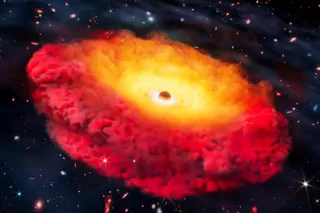After analyzing light coming from distant quasars, some researchers have asked a physical constant a blunt question: Are you really constant at all? And since the "fine structure constant" that they're interrogating is important for how physicists understand things like electrons' behavior in atoms and fusion in stars, other physicists are asking their own question: Are your measurements correct? The paper, which appeared last month in arXiv, argues that the constant might vary depending on location. This controversial claim is a new twist on a previous controversial claim--made over the past decade by some of the same physicists--which said that the constant varied with time.
Craig Hogan of the University of Chicago and the Fermi National Accelerator Laboratory in Batavia, Ill., acknowledges that “it’s a competent team and a thorough analysis.” But because the work has such profound implications for physics and requires such a high level of precision measurements, ...













